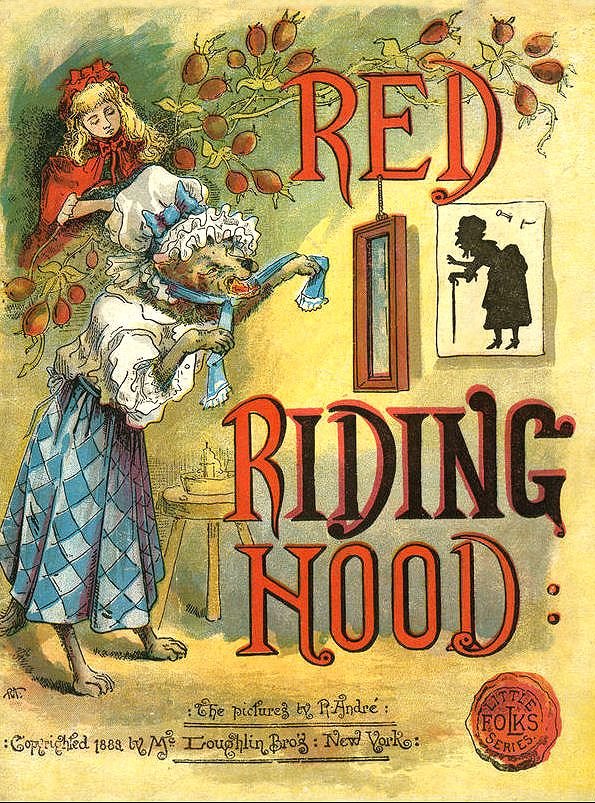A Brief History of Fairy Tales
The Brothers Grimm
1812
German
From Wealth to Peasantry and Back Again
The Brother’s Grimm claim they collected the stories for their first edition from peasants and farmers, some of them illiterate. This isn’t true. Jacob and Wilhelm Grim grew up in an upper middle-class family in Germany. They were the oldest of 6 siblings, 5 boys and 1 girl. By the time he was just 11, Jacob was forced to become a leader of the household when their father died of an unknown illness.
This led the family to fall far down the depths of the social ladder. Years later, the boys mother enrolled both Wilhelm and Jacob in a secondary school where she hoped they would train to become lawyers. They completed their education and were qualified to enter the well-paying profession, but during their studies the brothers found a different passion instead.
Lawyers to Liberians – A Peasants Wage
The school had an extensive library, with a handful of books on fairy tales that predate the Brothers Grimm themselves. Together they spent many days between the shelves discovering their love for reading. Much to their mothers’ dismay, upon graduation the Brother’s became librarians, a job that payed them almost nothing. It should be noted, that they still found ways to support their widowed mother, even on their meager incomes.
The Girls Who Told Them Their Stories
When they were just 20 and 21 years of age, Wilhelm and Jacob collected and wrote down their first collection of tales. Not from peasants in the fields as they liked to claim, but rather while drinking coffee, at nice bars and salons with wealthy upper-class woman. It is from woman like this where most of these tales come. It is also likely that the many of the woman read and discovered their stories from the books of Perrault, Basile and Straparola.
German Nationalism and Banned Books
This indicates these Fairy Tales may have passed down from written works rather then oral retelling of them like The Brothers’ claimed. It also indicates that the stories are not of pure German origin, but rather French and Italian; Going back to Straparola when he lived and published in Venice. The Brothers Grimm wrote explicitly that the tales they collected were purely German. They were memorized by German school children to build pride and nationalism all the way through the time of the Nazis. In 1945 The Allied Powers of WWII banned the Brothers Grimm Fairy Tales as they feared the Nazis were using it as part of their indoctrination methods on children. [1]
For those of you participating, you can add it to your reading list for banned book week.
Charles Perrault
1628 – 1703
French
Charles Perrault was born and raised in Paris. Growing up in a wealthy family, Perrault and his brothers all spent most of their lives in the upper echelons of French society. Most of them working closely in government or in legal professions. “In 1695, when he was 67, Perrault lost his position as secretary and decided to dedicate himself to his children. In 1697 he published Tales and Stories of the Past with Morals” [3]
As an author, he is most well remembered for creating the tales of Cinderella, The Sleeping Beauty, and Little Red Riding Hood, many of which are still read fondly by children today. At the end of Little Red, he emphasizes the moral, "Watch out if you haven't learned that tame wolves/ Are the most dangerous of all" [4]
At the end of Little Red, Perrault emphasizes the moral, "Watch out if you haven't learned that tame wolves/ Are the most dangerous of all" [4]
Giambattista Basile
1566 – 1632
Italian
Basile’s crowning work is remembered the collection of fairy tales known as II Pentamerone. Also translated sometimes as The Tale of Tales, or Entertainment for Little Ones. The Tales of Pentamerone are set in the woods and castles of the Basilicata, in particular the city of Acerenza. Within the collection he features likely the earliest known story of Rapunzel.
Giovanni Francesco Straparola
1485–1558
Italian
Straparola’s Pleasant Nights - 1551
Le Piacevoli Notti Di M. Giovanfrancesco Straparola da Caravaggio, translated as The Pleasant Nights is the earliest published collection of the stories most modern audiences consider a prat of the fairytale canon. The overarching narrative is divided into nights, similar to the style of 1001 Arabian Nights.
Rise Tales vs Restoration Tales
“A rise tale is one in which the protagonists begins in poverty and acquires a royal spouse and wealth through magical means. A restoration tale features a character that begins in an elevated state, is brought low through some humbling circumstance, and rises back to power” [2]
Ruth Bottigheimer makes the claim Straparola might have created the "rise plot" or "rise tale" often seen in fairy tales today. “Straparola's tales were written in Venice at a time when there was lots of poverty, and naturally the poor would be enticed by a rise tale… Yet Basile wrote his tales for the upper class, who despised the poor, and in his collection, "the vulgar masses are rejected and depicted as repellent." [2]
rags-magic-marriage-riches
References
1. Bottigheimer, Ruth B. (2009). Fairy tales : a new history. Albany, N.Y.: Excelsior Editions/State University of New York Press. ISBN 978-1-4416-0869-7. OCLC 320967720.
2. K, Kristen. (2012) Ruth Bottigheimer's New History of Fairy Tales. http://talesoffaerie.blogspot.com/2012/02/ruth-bottigheimers-new-history-of-fairy.html
3. Neil, Philip; Nicoletta Simborowski (1993). The Complete Fairy Tales of Charles Perrault. Houghton Mifflin Harcourt. p. 126. ISBN 0-395-57002-6.
